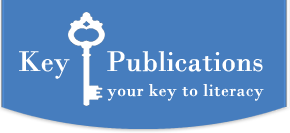Using CODES your children will become better writers and spellers.
Author, Judy Frost, developed CODES over a number of years when working with children, older students and adults in the one-to-one teaching situation. CODES stands for:
- C – COPYING
- O – OWN WRITING
- D – DICTATION
- E – EVALUATION
- S – SPELL/READING
Many students who came to her seeking help for reading were unable to write and spell successfully. Other children could read well but were having lots of trouble writing things down. She was on her way to discovering a method which cut through the years of learning it takes to develop good writing and spelling skills when she came across the work of an English handwriting expert, Reg Phillips. He had developed a way of linking spelling with reading, which he called Spell/Reading. Judy used this method with her students, modified it slightly, and found its users became more aware of the letters in each word; a skill needed for writing words correctly.
When we read we take in the pattern of each word. Linking spelling with reading became an important part of CODES.
There were many who said learning how to write and spell correctly wasn’t necessary in this modern age. Get with it Judy Frost! You’re too old-fashioned. But undaunted, Judy continued with developing CODES and documenting her work.
When we spell a word we need to know the correct letters and the correct sequence of letters in order to spell them correctly. Judy worked on this idea and used the age-old teaching methods of copying and dictation, own writing and percentages to help her. Then she graphed each of her student’s progress and CODES emerged. She soon had her students running to lessons rather than being dragged there. They couldn’t wait to do CODES. Many of them became successful writers, handwriters and spellers thanks to CODES.
The detractors persisted, however. It has been proved we don’t need to have the letters in words sequenced correctly in order to be able to decipher and read a text. Here’s a puzzle received as an anonymous email which claims to be from Cambridge University.
More Brain Stuff
. . . From Cambridge University.
Olny srmat poelpe can raed tihs.
I cdnuolt blveiee taht I cluod aulaclty uesdnatnrd waht I was rdanieg. The phaonmneal pweor of the hmuan mnid, aoccdrnig to rscheearch at Cmabrigde Uinervtisy,
it deosn’t mttaer in waht oredr the ltteers in a wrod are, the olny iprmoatnt tihng is taht the frist and lsat ltteer be in the rghit pclae. The rset can be a taotl mses and you can sitll raed it wouthit a porbelm.
Tihs is bcuseae the huamn mnid deos not raed ervey lteter by istlef, but the wrod as a wlohe. Amzanig huh? yaeh and I awlyas tghuhot slpeling was ipmorantt! if you can raed tihs psas it on !!
Psas Ti ON !
You may have noticed that each word contains the correct letters, put in a different order in some words and left correct in others. As it says in the puzzle, the first and last letters are in the correct places. The other aspect of the above piece of writing is that it’s more difficult to read than text that is spelt correctly. So why not learn how to spell it correctly in the first place?
Imagine what it would be like if you were a teacher correcting the work of students who believed it doesn’t really matter how you spell words or, for that matter, the order in which the letters are written. Many of today’s students are suffering from the effects of such mis-information and more. It won’t take you long to guess which students have their work marked first or those who score higher marks than others. With or without the use of technology, the reality is: SPELLING IS IMPORTANT! THE ORDER OF LETTERS IS IMPORTANT. THE ORDER OF WORDS IS IMPORTANT.
HANDWRITING IS IMPORTANT too. When we learn how to write letters with our hands we pay more attention to their formation. We know if the tall letters are tall, the short letters are short and the ones that have tails hang below the line. When we type, this information is overlooked because it it done for us. If you look back at the last sentence, you will notice the tall letters are in fact tall, the short ones are short and the ones with tails hang below the lines. The process of learning how to write with our hands slows the whole thing down and we have to take notice.
The appalling handwriting teachers are required to accept from their students is a testament to our times. They are told not to upset their students by saying anything that might make them anxious. Their student’s anxiety, however, is born in being allowed to do whatever they like, including holding the pencil every which way, rather than the way that is least stressful for their hands and fingers. Their anxiety grows when they receive poor marks or realise other students in their class can do very well even though they struggle to achieve. Anxiety reigns when they realise others can do running writing when all they can do is print, badly.
Learning how to write isn’t easy. It takes time, energy, discipline, self-discipline and effort. It is achievable. Children can improve if you’re prepared to spend the time, read the book and follow Judy’s lead with CODES!
“One of my former students sent me a copy of his PhD thesis to read, especially the part where he mentioned the work we had done together when he was a twelve-year-old who had trouble with reading and writing. He remembered well the reading side of it, mentioning TAPPS, but had forgotten the CODES component and its significance. That’s a good thing really. Best to forget the more arduous side of it. I subsequently spoke with him over coffee and told him, when he asked, what else we did. Through CODES I helped to build his visual memory of words for both reading and writing by teaching him to copy and spell accurately. We also worked together on improving his handwriting and did dictation. This helped with his being able to order words correctly in his own sentence construction. Both TAPPS and CODES worked hand in hand so that he became literate. You have to be at a high standard of literacy to complete your PhD, which he has done, admirably.“

